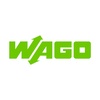Effectively harnessing and utilizing renewable energy sources requires sophisticated control and monitoring systems to ensure efficiency, reliability, and grid integration. Programmable Logic Controllers (PLCs) play a pivotal role in this endeavor, offering advanced automation capabilities for controlling and monitoring solar and wind power systems.
PLCsIn Solar Power Systems
Solar power systems, consisting of photovoltaic (PV) panels, inverters, batteries, and monitoring equipment, rely on precise control and monitoring to maximize energy capture and conversion. PLCs serve as the central nervous system of solar installations, coordinating the operation of various components and ensuring optimal performance.
Control Of Solar Arrays
PLCs are employed to control the orientation and tilt of solar panels to optimize sunlight exposure throughout the day. By tracking the position of the sun and adjusting the angle of solar arrays accordingly, PLCs maximize energy generation and improve overall system efficiency. Advanced PLC algorithms incorporate predictive modeling and real-time data analysis to dynamically adjust panel positions based on weather conditions and solar irradiance levels.
Inverter Control And Grid Integration
Inverter control is another critical function performed by PLCs in solar power systems. By managing voltage levels, frequency, and synchronization with the grid, PLCs ensure stable and reliable power output while complying with grid regulations and standards.
Additionally, PLCs enable seamless grid integration, allowing solar power systems to feed surplus energy back into the grid or synchronize with utility-scale power plants for enhanced reliability and resilience.
Monitoring And Diagnostics
PLCs play a vital role in monitoring the performance and health of solar power systems. PLCs collect real-time data on energy production, system efficiency, and equipment status through integrated sensors and communication interfaces. Advanced monitoring capabilities enable early detection of faults, anomalies, or performance degradation, allowing operators to take proactive maintenance actions and minimize downtime.
Additionally, PLCs facilitate remote monitoring and diagnostics, enabling operators to access system data and diagnostics from anywhere via web-based interfaces or mobile applications.
PLCs In Wind Power Systems
Wind power systems, comprising wind turbines, generators, control systems, and grid interfaces, rely on precise control and monitoring to harness wind energy efficiently. PLCs provide advanced automation solutions for wind power installations, optimizing turbine operation and grid integration while ensuring safety and reliability.
Turbine Control And Pitch Adjustment
PLCs are central in turbine control, managing rotor speed, blade pitch, and yaw angle to maximize energy capture and optimize power output. By continuously monitoring wind speed, direction, and turbine performance, PLCs adjust blade pitch angles and yaw orientations to maintain optimal operating conditions and prevent overspeed or stall conditions.
Advanced PLC algorithms incorporate predictive modeling and adaptive control strategies to respond dynamically to changing wind conditions and load demands, ensuring efficient and reliable turbine operation.
Grid Integration And Power Quality Management
PLCs facilitate the seamless integration of wind turbines with the electrical grid, managing power output, voltage levels, and frequency synchronization. PLC-based control systems regulate power flow between turbines and the grid, ensuring stability, reliability, and compliance with grid codes and standards.
Additionally, PLCs enable power quality management, mitigating harmonics, voltage fluctuations, and grid disturbances to maintain grid stability and ensure compatibility with other energy sources.
Condition Monitoring And Fault Detection
PLCs enable comprehensive condition monitoring and fault detection in wind power systems, detecting anomalies, abnormalities, or performance degradation in real time. PLCs continuously monitor turbine components, gearboxes, bearings, and electrical systems through integrated sensors and diagnostic algorithms, identifying potential issues in the early stages.
Advanced diagnostic features enable predictive maintenance scheduling, allowing operators to optimize maintenance activities, minimize downtime, and maximize turbine availability and reliability.
Final Thoughts
Programmable Logic Controllers (PLCs) are crucial in optimizing the operation and performance of solar and wind power systems, enhancing efficiency, reliability, and grid integration. In solar power installations, PLCs control solar arrays, manage inverter operation, and enable real-time monitoring and diagnostics to maximize energy capture and conversion. In wind power systems, PLCs regulate turbine control, facilitate grid integration, and provide advanced condition monitoring and fault detection capabilities to ensure efficient and reliable energy production.


No comments yet